Fastest Car In The 1920s
Cars take revolutionized the earth we live in, and fast cars have fascinated people since the very first — often times for no real reason other than fame and glory. Let's exist honest — how often will you get to bulldoze your car at 300 km/h, even if information technology's able to become that fast? No affair the reason, we like fast cars, so let's learn a scrap more than almost them. Here'due south a listing of the fastest cars, decade by decade.
1880-1889 | Horse wagon | x-xxx mph (16-48 km/h)
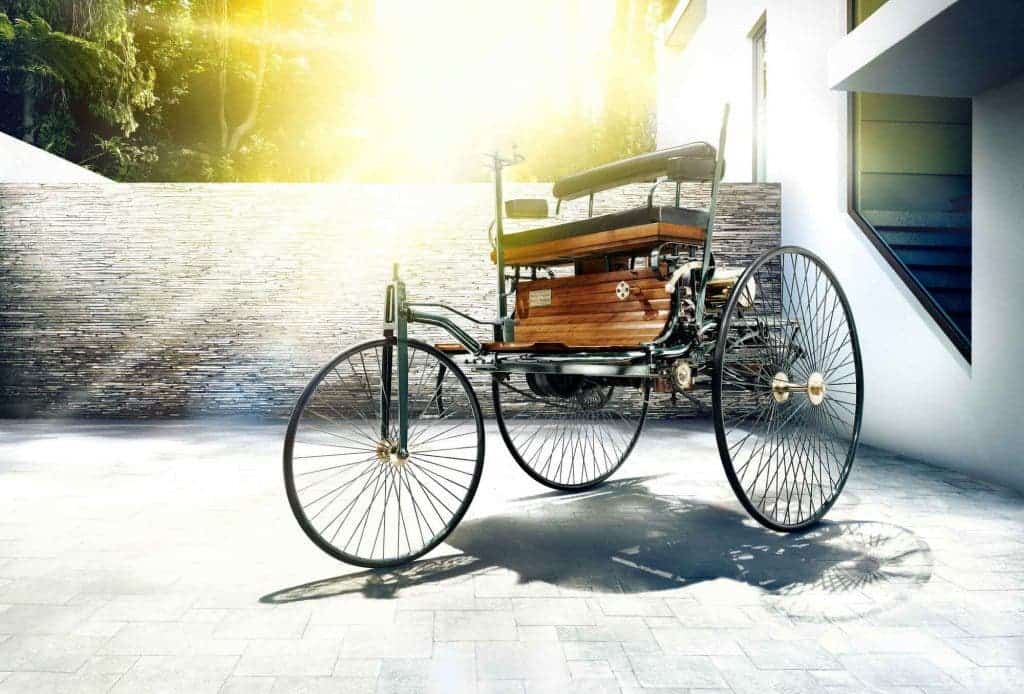
I know, I know, this is not a car, it's a equus caballus-drawn carriage — but we needed a reference signal. This is the Benz Motorwagen, ane of the sleekest carriages always fabricated. There's no definite maximum speed for carriages, but since specially-bred horses can reach some 40 mph free, it seems prophylactic to say that 30 mph should be the top speed with the weight of the carriage and the passengers. It's a real piece of fine art and history, but allow's motion on to some real cars!
1890-1899 | Stanley Runabout | 35 mph (56 km/h)
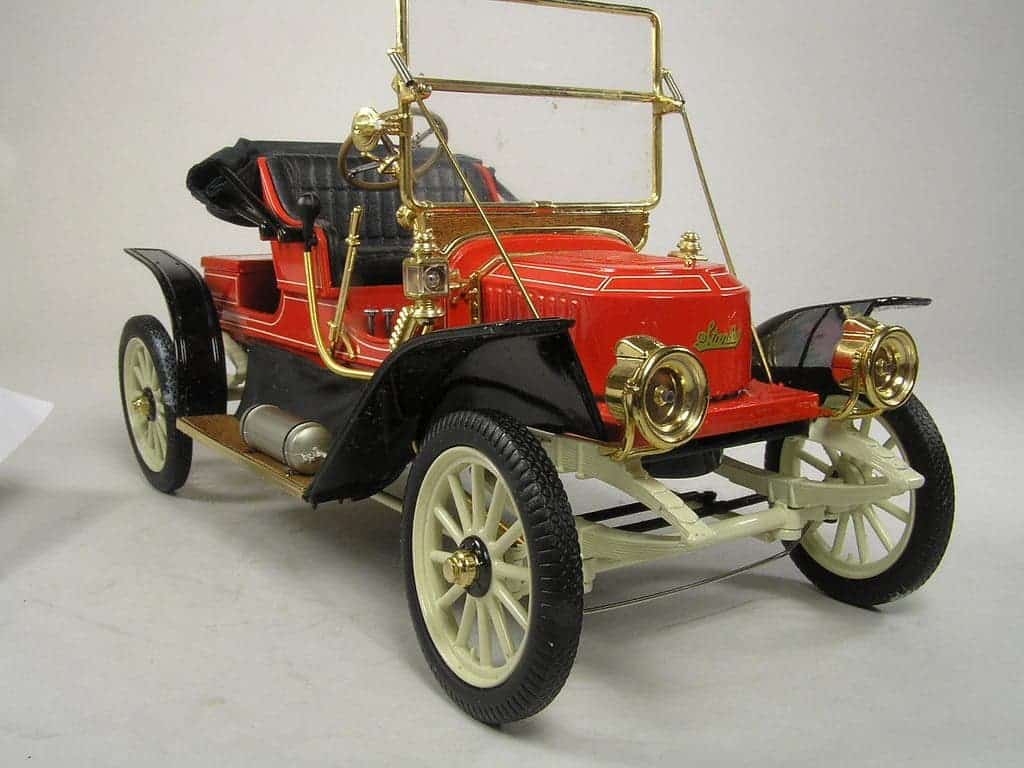
Oh aye, now nosotros're talking! F.E. and F.O. Stanley were twins born in Kingsland, Maine, on June 1, 1849. They operated a dry-plate photographic concern in Massachusetts until they entered the car manufacture in 1896 with a splash. They developed this magnificent car with a steam engine, the best selection considering the available engineering at the fourth dimension. Steam engines oftentimes have fewer than 25 moving parts, then this powerful engine for its time was quite elementary in essence, though its complexity was impressive.
In 1897 the duo began producing automobiles in Massachusetts, selling over 200 by the fall of 1897.
1900-1909 | Mercedes-Simplex 60HP | 73 mph (117 km/h)
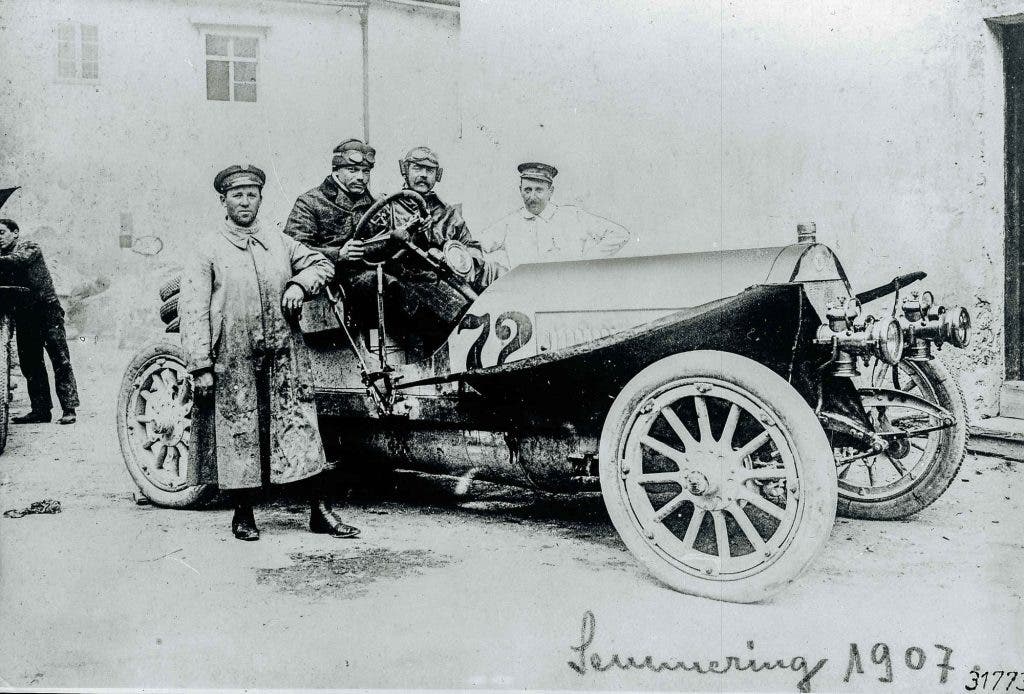
The Mercedes Simplex was an automobile produced from 1902 to 1909 by the Daimler Motoren Gesellschaft (DMG, Daimler Motor Club, a predecessor of Daimler-Benz and Daimler-Chrysler). It connected the employ of the Mercedes proper name as the brand of DMG, rather than Daimler.
This auto featured powerful engines, with ability ranging from xl (at 1300 rpm) to 60 horsepower. It used a magneto-electric spark ignition arrangement, with a single spray-nozzle carburetor. Information technology represented quite a footstep forrard at the time, being quite dissimilar whatever other vehicle in its day. Considering of this, the Simplex apace became pop with royalty, dignity, and the other creme de la creme of the solar day. Needless to say, this car cemented the dominance of Mercedes in the field of automobiles, a legacy the company carries to this day.
1910-1919 | Austro-Daimler Prince Henry | 85 mph (136 km/h)
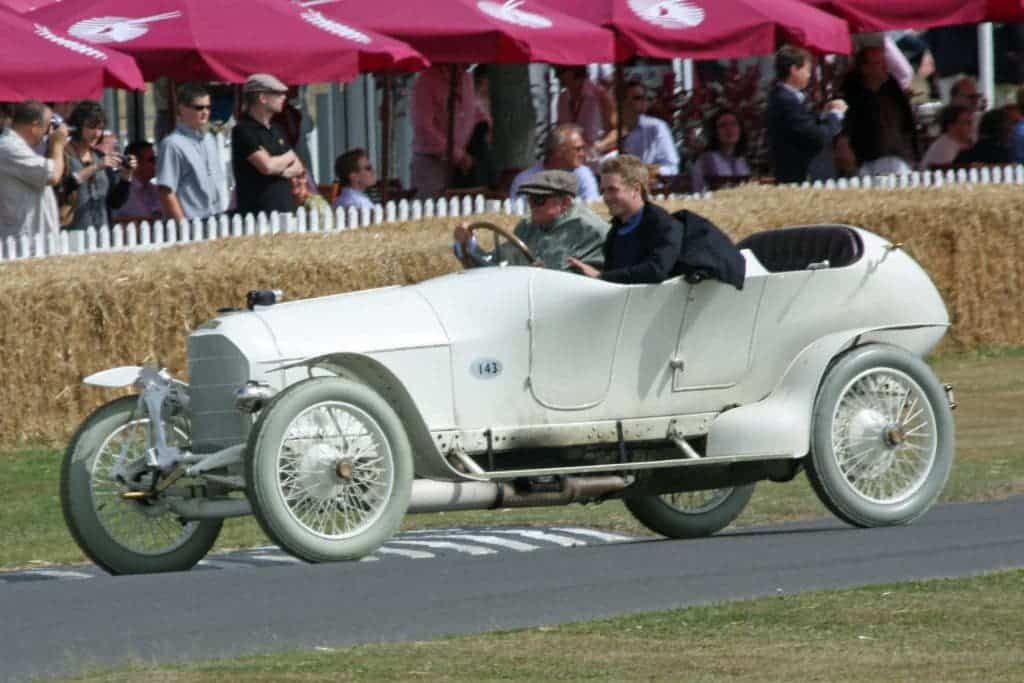
In 1911 Austro-Daimler began producing the Prinz Heinrich (in English language: Prince Henry) model; this car featured an overhead cam five,714-cc four-cylinder engine. The car's production figures suffered during the Commencement Earth War as the 4,500 workers of Austro-Daimler contributed in big numbers to wartime production. Unfortunately, presently after that, the company began collapsing. Nevertheless, this car remains an image of the luxury and technological prowess of its time.
1920-1929 | Duesenberg Model J | 119 mph (191 km/h)

The Duesenberg Model J is a luxury car made by Duesenberg. Created in 1928, the machine was meant to compete with the most powerful and elegant cars of the time, and it did an astonishing job at that. Unfortunately for the company, the car was introduced only a few years before the stock market crash that led to the Great Depression and was sold simply until 1937. Although smaller than other engines of the time, it generated 265 hp. This made the car amazingly fast for its time. It was dominant and had all you could want in a high-end car. Information technology could have become a staple, cherished to this solar day, if non for the circumstances of the time.
1930-1939 | Duesenberg Model SJ | 140 mph (225 km/h)
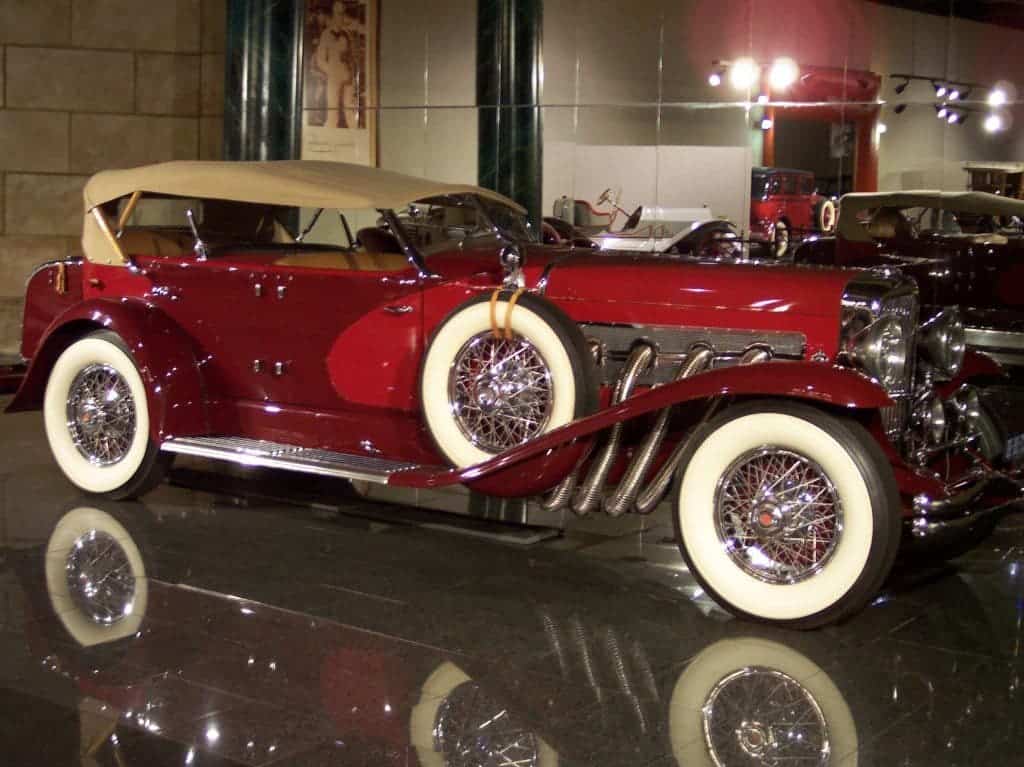
You're probably starting to notice a trend for these concluding few cars. The Duesenberg J was so dominant at its time that the company did what every respectable machine company would do — they pimped it out. The SJ had a 320 hp, inline, eight-cylinder engine with a centrifugal supercharger, a three-speed transmission transmission, beam-type front, live rear axles with semi-elliptic foliage springs, and 4-wheel vacuum-assisted hydraulic drum brakes. Interestingly plenty, the car was initially designed for Mae West, who ultimately declined the design. Joke'south on her, right?
1940-1949 | Jaguar XK 120 | 132 mph (214 km/h)
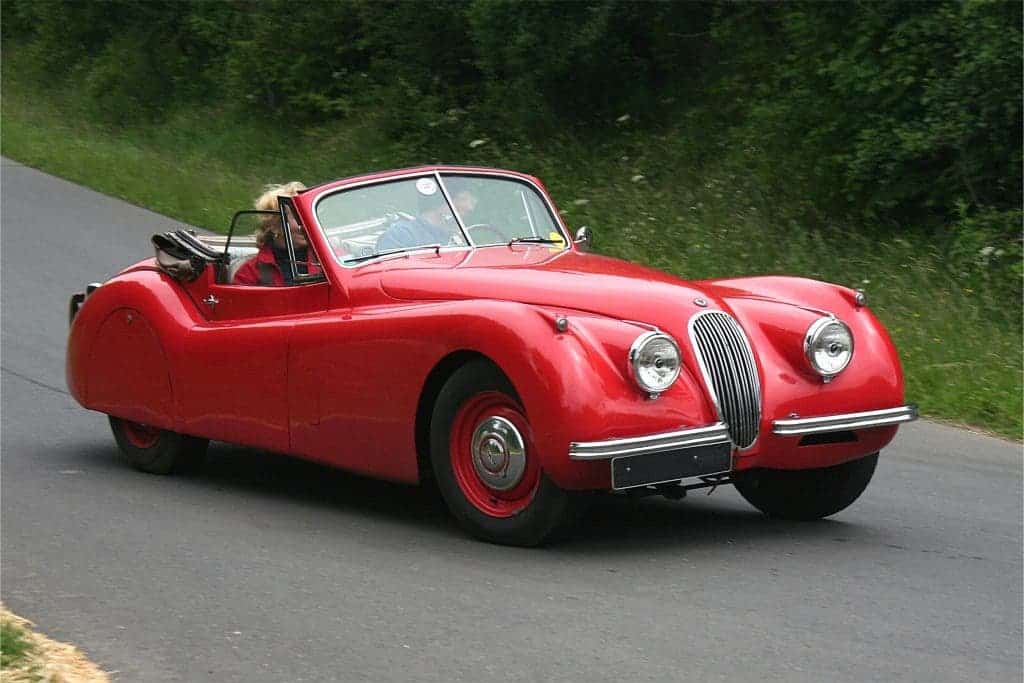
Perhaps the best attestation to how dominant the Duesenberg was at its time is that for the side by side decade, no one could create a faster car — although, in all fairness, no ane really cared most that during WWII. After the war, information technology was time for the Jaguar to rise to prominence. The XK was sold between 1948 and 1954. It was Jaguar's showtime sports automobile since the SS 100, which ceased production in 1940. For loftier speeds, the windshield had to be folded down, which must take given riders quite a thrill.
1950-1959 | Aston Martin DB4 GT | 153 mph (246 km/h)

Loftier speed and high grade seem to become paw in hand, and the Aston Martin DB4 GT was the epitome of both. With supreme class and luxury, it was the undisputed ruler of the highways, and even today, they are sold at lavish auctions for dazzling prices. Due to the huge popularity, huge price tag, nifty look, and rarity of the DB4 GT, many replica cars have been constructed, and even those replicas sell extremely well.
1960-1969 | Ferrari 365 GTB/4 "Daytona" | 174 mph (280 km/h)
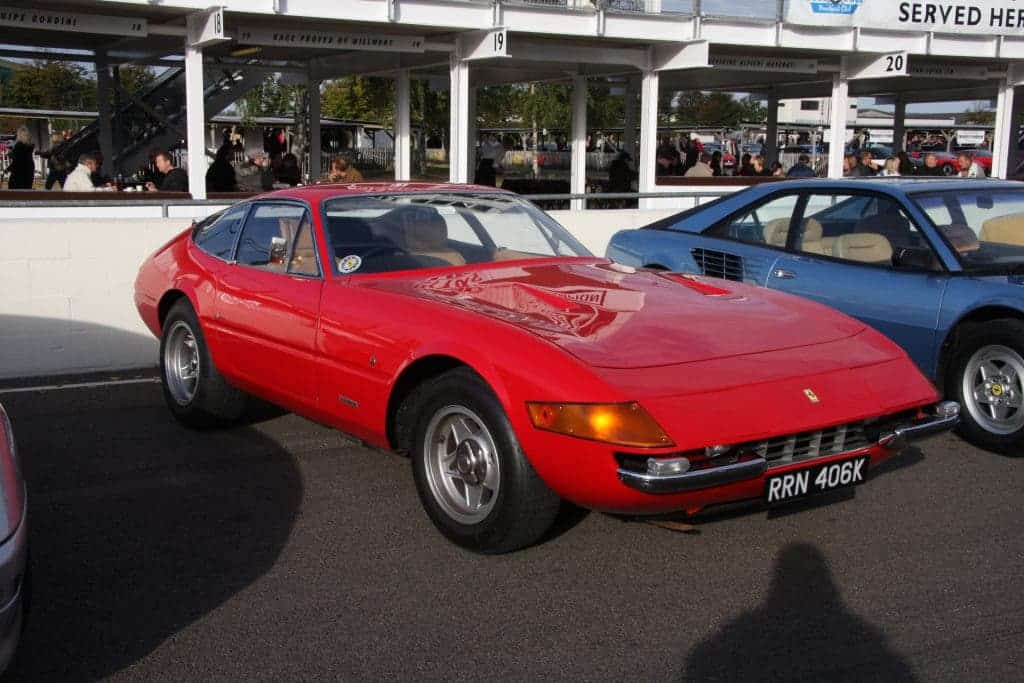
Of grade, no "Fastest" listing would be complete without at least one Ferrari.
Better known as the Ferrari Daytona, The Ferrari 365 GTB/4 was a traditional forepart-engined, rear drive automobile. The car accomplished fame not merely for existence the fastest of its decade but also for existence driven past Dan Gurney and Brock Yates in the inaugural Cannonball Baker Sea-To-Shining-Ocean Memorial Trophy Dash. The outcome showcased not only the car's maximum speed but also its capacity to maintain high speeds over long periods of time. The duo won with an average speed of 80.i miles per hour (129 km/h), completing the distance from New York to L.A. in 35 hours 54 minutes (2,876 miles (4,628 km)).
1970-1979 | Ferrari GT4 Berlinetta Boxer | 175 mph (281 km/h)

Ferrari connected to assert its dominance over the next decade as well. Amidst hotter and hotter competition, in which Lamborghini said its Countach could do 200 mph (and information technology couldn't), information technology was again Ferrari who took the crown. It'southward worth noting that no BB was ever originally sold in North America, as Enzo did non believe it to be worth the cost of complying with the actress environmental and safety regulations. Today, he'd probably sell information technology only in the United states of america.
1980-1989 | Ferrari F40 | 202 mph (325 km/h)
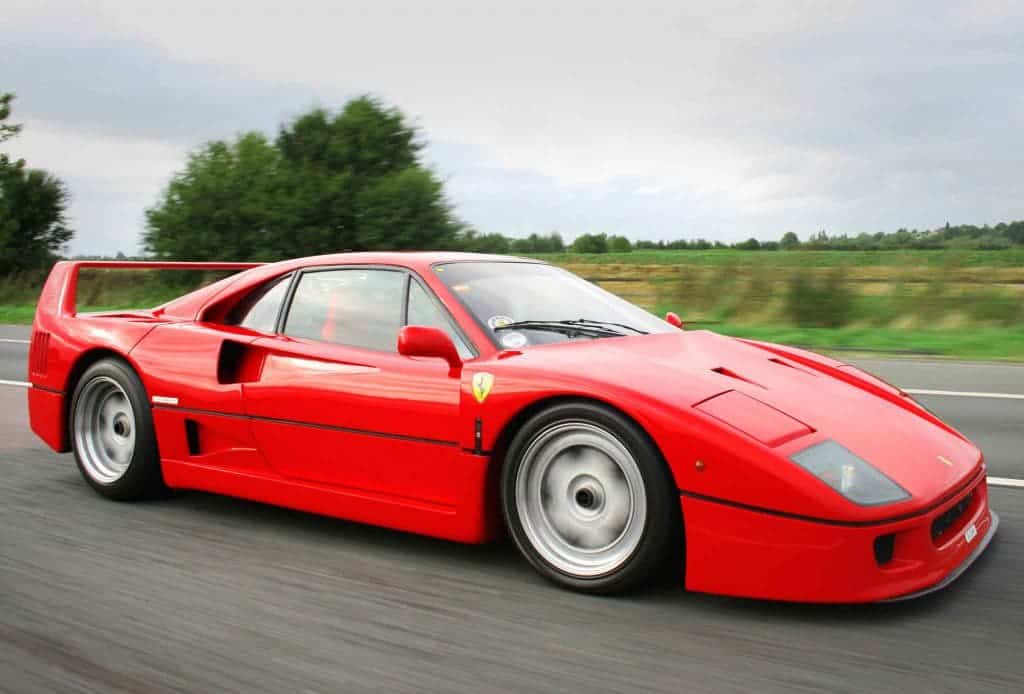
Its straight competitor, the Porsche 959, was almost only as fast at 200 mph, only Ferrari once again took the crown. An endless debate emerged between which one was amend, and that debate notwithstanding hasn't been answered today; just in terms of speed, the Ferrari F40 takes the crown.
1990-1999 | McLaren F1 | 240 mph (386 km/h)
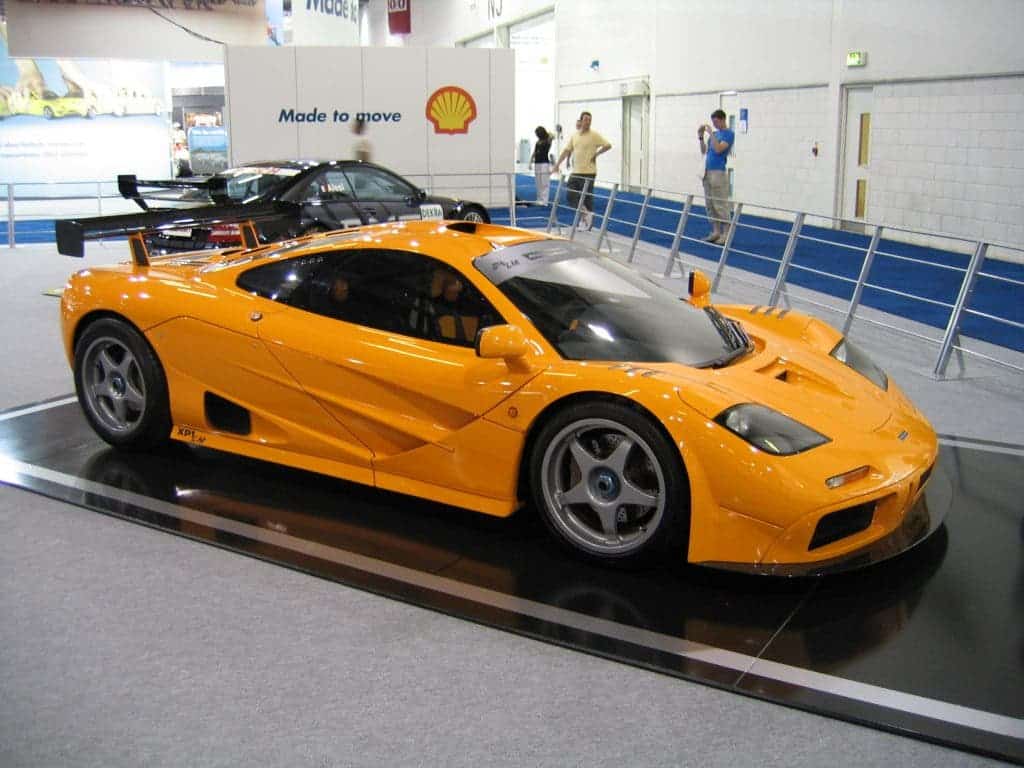
An emblematic car, the McLaren F1's speed was only limited by its engine rpm — it was then aerodynamic that wind resistance was almost negligible. Information technology was and then amazingly fast th at it won the LeMans not just in its class but too in the image form, something which was unheard of for a streetcar — to this appointment, this is considered i of the nearly incredible feats in motorsports. In 1994, the British car magazine Autocar stated in a road test regarding the F1, that "the McLaren F1 is the finest driving machine yet built for the public route" and that it "will be remembered as one of the groovy events in the history of the car, and it may maybe be the fastest production route car the world will ever come across."
Simply information technology wasn't.
2000-2009 | Shelby Super Cars (SSC) Aero | 257 mph (414 km/h)
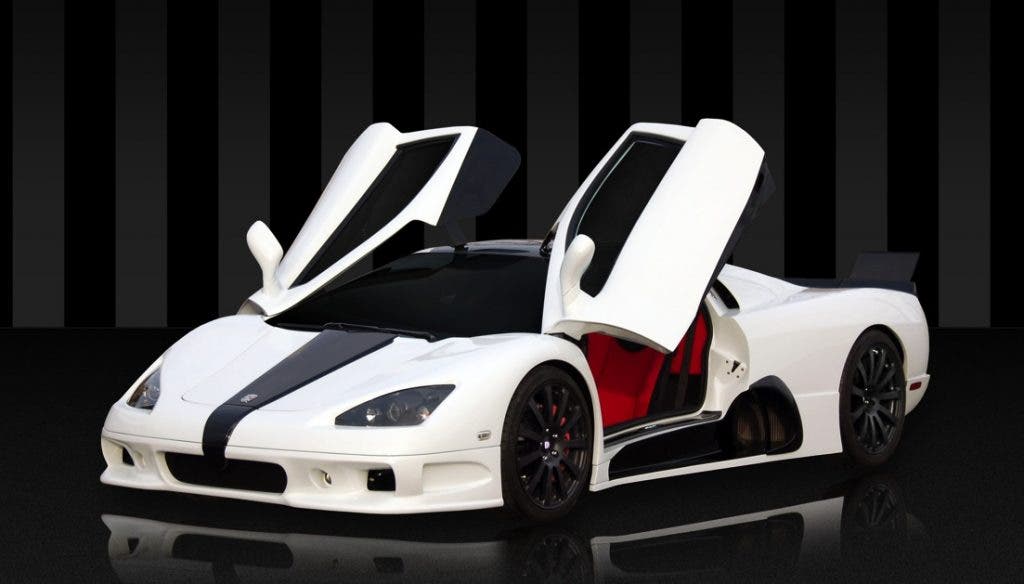
The SSC Aero came with a bang, and to this twenty-four hours, it lost the title of 'fastest production car' by just a scratch. The SSC Ultimate Aero held the title of the fastest product car in the world from 2007 until the Bugatti Veyron came out in 2010. Simulation and testing at NASA's Virginia facility had shown the Ultimate Aero TT theoretically capable of attaining approximately 273 mph (439 km/h), enough to surpass the product machine record-holding Bugatti Veyron's 253.7 mph (408.3 km/h).
2010 – today | Bugatti Veyron sixteen.four Super Sport | 268 mph (431 km/h)
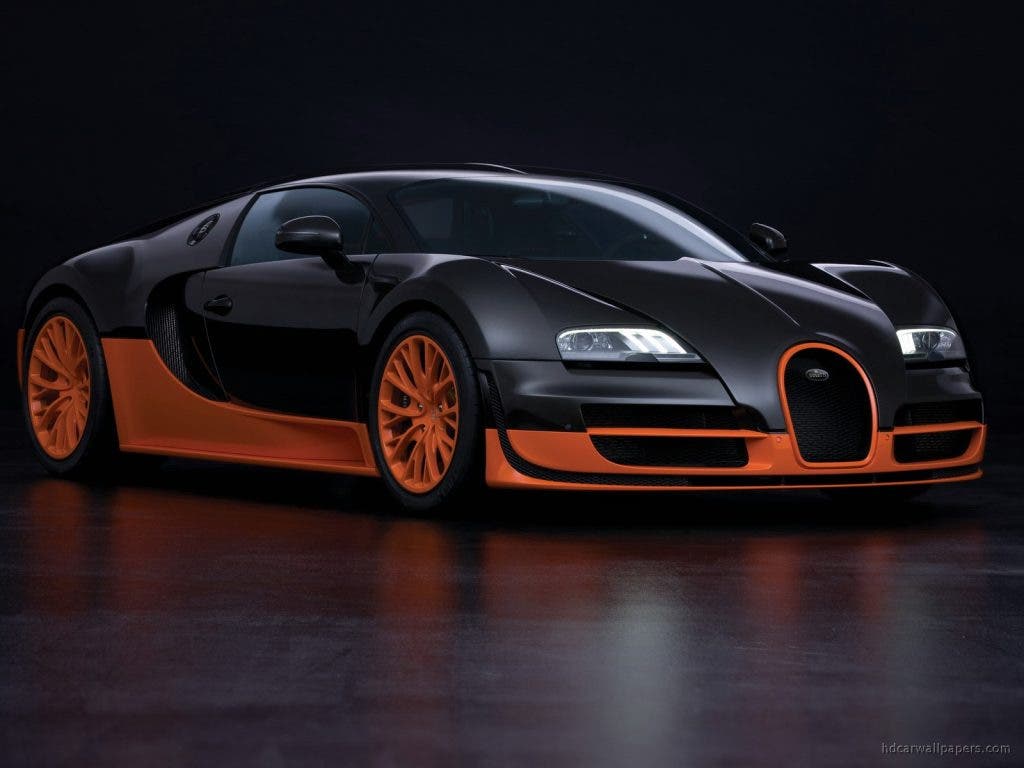
The original version had a top speed of 407 km/h (253 mph), but the superspeed version went even further. The electric current Super Sport version of the Veyron is recognized by Guinness World Records as the fastest street-legal production machine in the world. The Veyron features an eight.0-liter, quad-turbocharged, W16 cylinder engine, equivalent to 2 narrow-angle V8 engines bolted together. Each cylinder has four valves (for a full of 64), but the VR8 configuration of each banking company allows two overhead camshafts to drive 2 banks of cylinders and so only iv camshafts are needed. It's a monumental car, and a spectacular engineering achievement by all standards.
An honorable mention goes to the Hennessey Venom GT, which recorded a top speed of 270.49 mph (435.31 km/h) — but only in ane direction (runs in both directions need to exist accomplished to recoup for the wind speed) and only 16 cars have been ever sold — too piffling to be considered a product car.
Every bit far as the fastest cars in general, not simply production ones, we have two mod-day contenders worth taking a await at:
2011 – 2015 | Hennessey Venom GT | 270 mph (434 km/h)

Just 12 of these cars were e'er produced, which definitely disqualifies them from beingness considered a 'production' vehicle. However, its characteristics are definitely worth its $1.2 million price tag.
Powered by a one,200 horsepower, twin-turbocharged V8 engine, the Hennessey Venom GT achieved a superlative speed of 270.49 mph at the Kennedy Space Eye on February 14, 2014. At the fourth dimension, this made it the fastest car in the world, overtaking the Bugatti Veyron Super Sport by ii miles per 60 minutes. The automobile goes from cypher to 60 mph in 2.vii seconds.
2015 – today | Koenigsegg Agera RS | 278 mph (447 km/h)
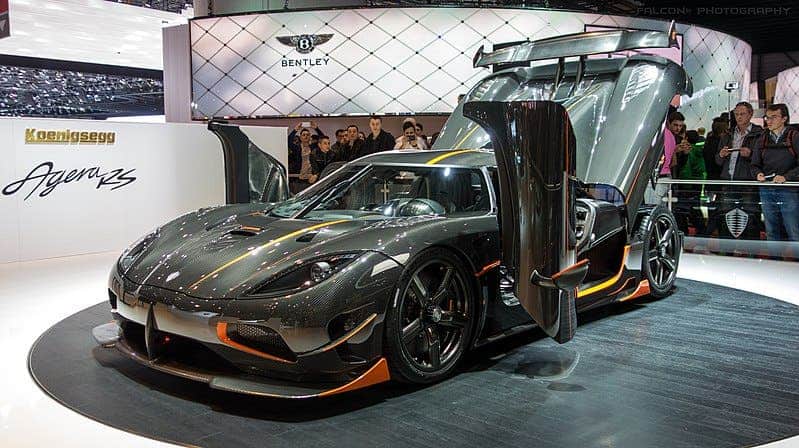
The Agera RS was unveiled at the 2015 Geneva Motor Show, gathering quite a fair share of attention — and for proficient reason.
This is the fastest machine in the world today. The company tweeted back in November 2017 that the model achieved a world tape of 277.9 mph, documenting the moment on video. All this performance comes from its twin-turbo V8, 1176 horsepower engine. It goes from 0 to 60 mph in 2.nine seconds, and from 0 to 249 mph in 33.29 seconds.
Fastest Car In The 1920s,
Source: https://www.zmescience.com/other/feature-post/fastest-cars/
Posted by: graydowits.blogspot.com


0 Response to "Fastest Car In The 1920s"
Post a Comment